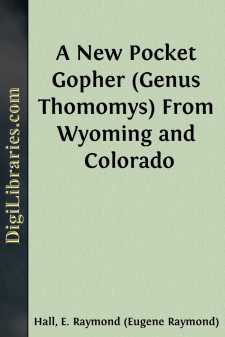Fiction
- Action & Adventure 180
- Biographical 15
- Christian 59
- Classics 6965
- Coming of Age 5
- Contemporary Women 3
- Erotica 8
- Espionage/Intrigue 12
- Fairy Tales, Folklore & Mythology 236
- Family Life 169
- Fantasy 117
- Gay 1
- General 596
- Ghost 32
- Historical 808
- Horror 43
- Humorous 159
- Jewish 25
- Legal 4
- Medical 22
- Mystery & Detective 315
- Political 49
- Psychological 41
- Religious 64
- Romance 158
- Sagas 11
- Science Fiction 730
- Sea Stories 113
- Short Stories (single author) 537
- Sports 10
- Suspense 1
- Technological 8
- Thrillers 2
- Urban Life 31
- Visionary & Metaphysical 1
- War & Military 173
- Westerns 199
Fiction Books
Sort by:
CHAPTER I THE WARDEN'S LODGINGS The Founders and the Benefactors of Oxford, Princes, wealthy priests, patriotic gentlemen, noble ladies with a taste for learning; any of these as they travelled along the high road, leaving behind them pastures, woods and river, and halted at the gates of the grey sacred city, had they been in melancholy mood, might have pictured to themselves all possible...
more...
Chapter One. The First Morning. “Remember, Hazel,” said Mrs Thorne, “remember this—we may be reduced in circumstances; we may have been compelled by misfortune to come down into this wretched little town, and to live in this miserable, squeezy, poorly-furnished house or cottage, with the light kept out by the yellow glass, and scarcely a chimney that does not smoke; we may be compelled to dress...
more...
by:
George Young
The following account of events in Germany during the period from the Armistice to the Treaty of Versailles was written mostly in the summer of 1919. But the events of the succeeding period from the signature of the Treaty to its ratification during the autumn and winter call for no alteration and but little addition to the text. The six months hereinafter described from February to August were...
more...
by:
John M. Legler
In July, 1957, members of a field party from the University of Kansas Museum of Natural History, under the direction of Mr. Sydney Anderson, spent 12 days collecting vertebrates in the vicinity of Creel in southwestern Chihuahua. Among the specimens are two snakes representing an undescribed species of the genus Geophis. A description and illustrations of these two specimens were prepared and submitted...
more...
by:
Barry Pain
CHAPTER I (The first few pages of the account of his travels by Mr Lemuel Gulliver, junior, have unfortunately been damaged by fire and are for the most part illegible. They contain reference to a sea-fog and to a shipwreck. He appears to have escaped by swimming, and his record of the number of days he spent in the water and the distance covered verges upon the incredible. His statement that he lived...
more...
by:
Edward H. Taylor
A small collection of Mexican reptiles and amphibians recently acquired by the University of Kansas Natural History Museum contains five specimens of a species of the genus Hyla (sensu lato) which is here described as new. Hyla proboscidea sp. nov. Type.—University of Kansas Museum of Natural History, No. 23626, collected 2 km. west of Jico, Veracruz, Mexico, at an elevation of 4,200 ft., Oct. 28,...
more...
by:
David M. Dryfoos
ne thing about an electronic awakener: no matter how elaborate its hookup, melodious its music, and important its announced reminders, when it goes on in the morning you can always turn it off again. Boswell W. Budge always did exactly that. But there's no turning off one's kids, and thus, on the most important morning of his life, February 30, 2054, Bozzy arose, much against his will,...
more...
by:
Lady Gregory
THE BOGIE MEN Scene: A Shed near where a coach stops. Darby comes in. Has a tin can of water in one hand, a sweep's bag and brush in the other. He lays down bag on an empty box and puts can on the floor. Is taking a showy suit of clothes out of bag and admiring them and is about to put them on when he hears some one coming and hurriedly puts them back into the bag. Taig: (At door.) God save all...
more...
by:
Various
A, the first letter in many alphabets. The sound most commonly belonging to it, as in French, Italian, German, &c., is that which is heard in father, pronounced short or long. In English the letter is made to represent at least seven sounds, as in father, mat, mate, mare, many, ball, what, besides being used in such digraphs as ea in heat, oa in boat.—A, in music, is the sixth note in the...
more...
Among small mammals accumulated, from Wyoming, in the Museum of Natural History of the University of Kansas, specimens of the wide-spread species Thomomys talpoides are abundantly represented. Subspecific names are available for most of these, but specimens from the Sierra Madre Mountain Range of Wyoming and Colorado prove upon comparison to pertain to an heretofore unnamed subspecies which may be...
more...











